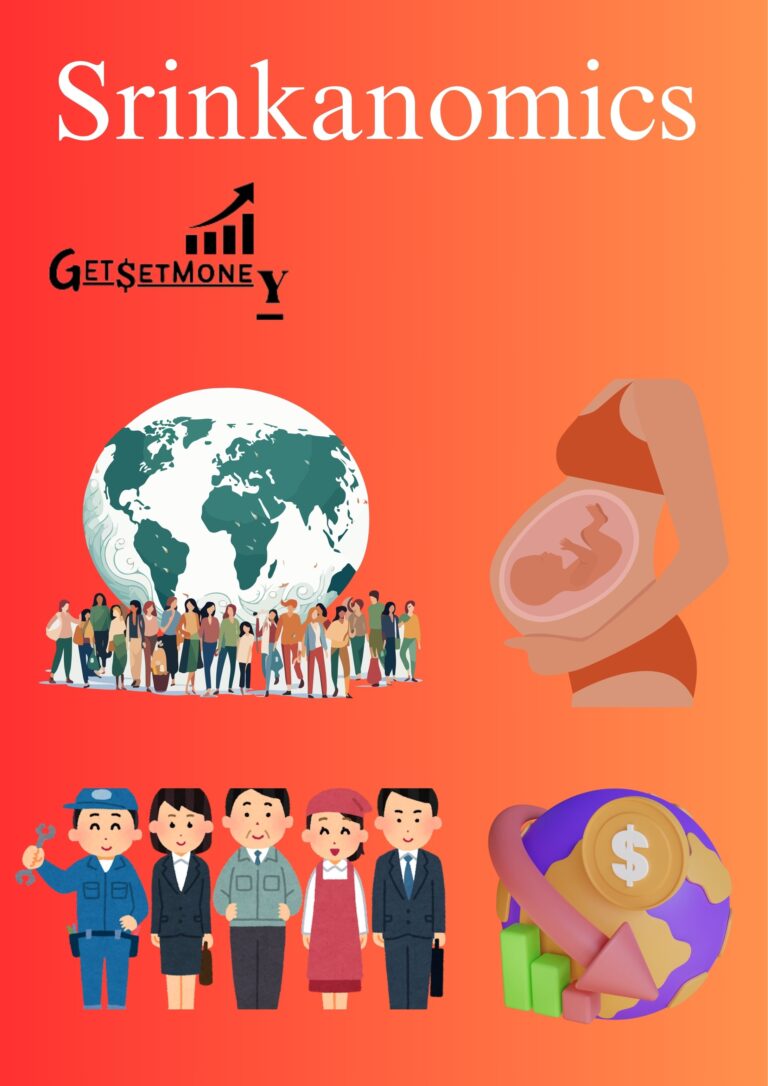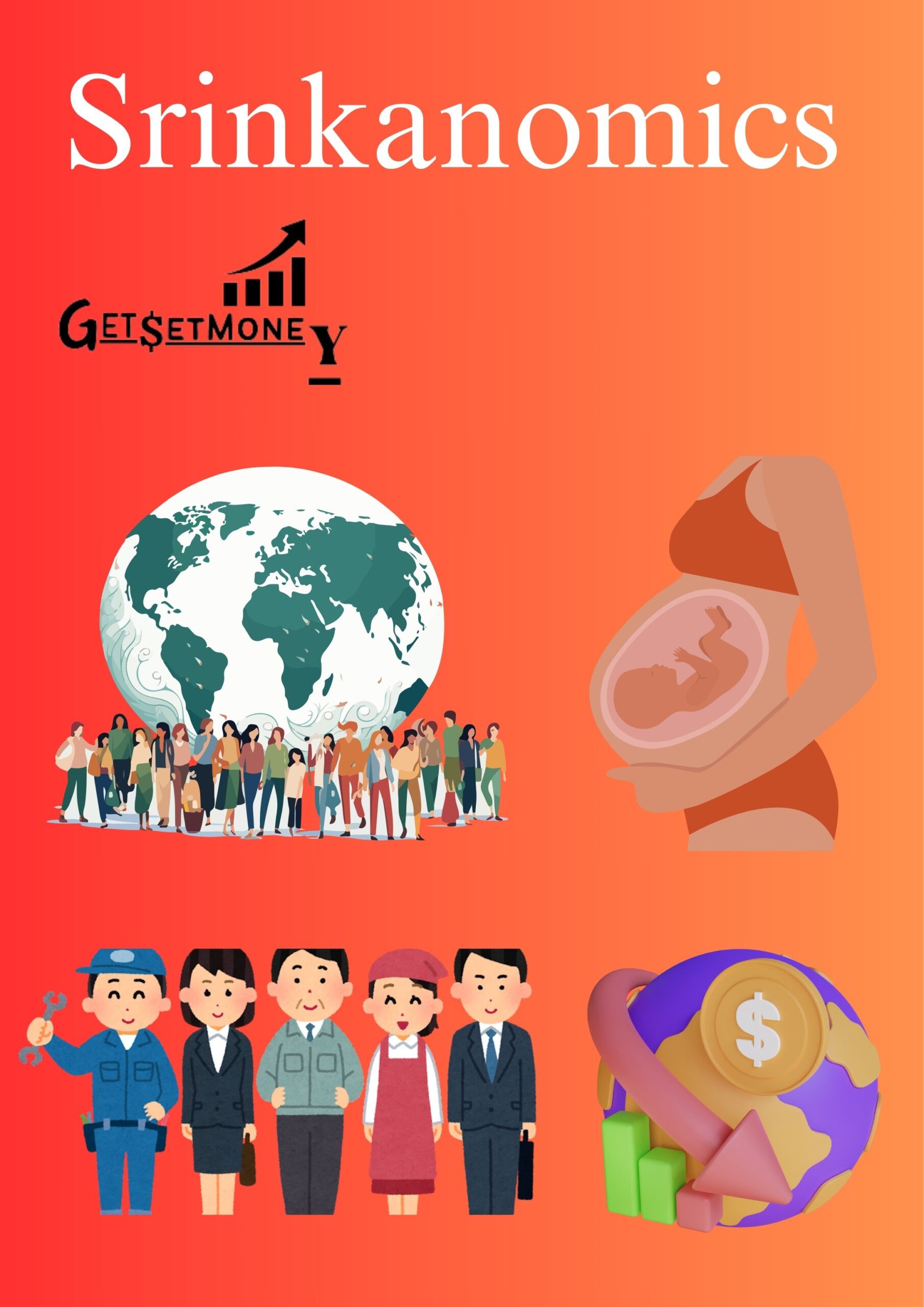
Srinkanomics:
The world is undergoing a profound demographic shift. While concerns about overpopulation have historically dominated the discourse, a new phenomenon is taking center stage: shrinking populations. “Shrinkanomics” has emerged as the term to describe the strategies and policies needed to adapt to this reality and ensure economic vitality in the face of declining and aging populations.
Table of Contents
1. The Population Crisis: A Tale of Two Extremes
The term “population crisis” encompasses two distinct but interconnected challenges:
- Overpopulation: In regions like India and Nigeria, rapid population growth strains resources and infrastructure. The resulting competition for jobs, housing, and essential services can stifle economic growth and exacerbate inequality.
- Population Decline: Many developed nations now face declining fertility rates, leading to shrinking workforces and a growing dependency ratio (the number of non-working individuals supported by the working population). This places a heavy burden on government finances, as pension and healthcare costs rise while tax revenues shrink.
Both extremes of the population crisis have significant economic ramifications, requiring tailored solutions that address the unique challenges of each scenario
2. The Baby Bust and Its Economic Fallout
The “baby bust” refers to a sustained decline in birth rates following a period of higher fertility. This phenomenon often occurs in tandem with economic downturns or social shifts.
Economic consequences of a baby bust include:
- Shrinking Consumer Base: Fewer children mean less demand for goods and services like childcare, education, and toys, impacting related industries.
- Aging Workforce: As older workers retire, a smaller pool of young workers is available to replace them, leading to labor shortages and potentially slowing economic growth.
- Shrinking Tax Base: Fewer workers translate to less tax revenue, making it harder to fund social programs and public services.
Understanding the economic ripples of a baby bust is crucial for policymakers aiming to mitigate its negative effects.
3. The Replacement Rate: A Key Metric for Shrinkanomics
The replacement fertility rate (approximately 2.1 children per woman) is the level needed to maintain a stable population size. When fertility rates consistently fall below this threshold, the population begins to shrink.
Economic consequences of sub-replacement fertility:
- Economic Stagnation: A declining workforce and reduced consumer demand can lead to stagnant or even negative economic growth.
- Increased Dependency Ratio: A larger proportion of elderly individuals relying on social services puts a strain on government budgets.
Maintaining a stable population or encouraging moderate growth is a central goal of Shrinkanomics, as it can help ensure economic sustainability.
4. Dropping Fertility Rates: The Shrinkanomics Challenge
Globally, fertility rates have been declining due to factors like increased education and economic opportunities for women, access to contraception, and changing social norms. This trend is particularly pronounced in developed nations.
The economic implications of declining fertility are profound:
- Innovation Gap: A shrinking pool of young minds may lead to fewer breakthroughs in science, technology, and other fields critical for economic progress.
- Rising Healthcare Costs: An aging population requires more healthcare resources, putting additional pressure on government spending.
Shrinkanomics necessitates innovative policies to address these challenges, such as incentivizing childbirth, promoting immigration, and investing in education and training for a multi-generational workforce.
Srikanomics: A Model for the Future?
As India transitions towards a shrinking population growth rate, the principles of Shrinkanomics can provide valuable insights. By investing in education, healthcare, and family-friendly policies, India can navigate this demographic shift while harnessing the potential of its vast human capital.
The global population landscape is evolving rapidly. Understanding the principles of Shrinkanomics and implementing proactive policies is essential for nations to thrive in this new era.
Conclusion
The concept of Shrinkanomics highlights the economic challenges posed by shifting global demographics, from overpopulation concerns in developing nations to population decline and aging workforces in developed ones. The economic repercussions of these trends are profound, affecting everything from consumer demand and workforce dynamics to government finances and innovation capabilities.
Addressing these challenges requires tailored policies that encourage sustainable population growth, support aging populations, and promote economic resilience. Countries must innovate across sectors, from healthcare and education to immigration and social policies, to navigate the complexities of Shrinkanomics successfully.
As we look to the future, the lessons of Shrinkanomics can guide policymakers in adapting to these demographic shifts while fostering economic vitality and social well-being. By embracing these principles, nations can not only mitigate the negative impacts of shrinking populations but also harness the potential opportunities presented by a changing global landscape.
Shrinkanomics represents a crucial framework for understanding and responding to the economic realities of our time, ensuring that societies can thrive in the face of demographic change.
FAQ:
1. What is Srinkanomics?
Srinkanomics is a theoretical or conceptual framework that combines various economic principles and strategies unique to a specific context or philosophy. It can involve innovative approaches to economic development, resource management, and policy-making tailored to meet particular goals or address specific challenges.
2. Who developed Srinkanomics?
The term “Srinkanomics” does not refer to an established economic theory widely recognized in academic or economic circles. It might be a term coined by a specific individual, organization, or community to describe a unique economic approach or model they advocate.
3. What are the core principles of Srinkanomics?
While the exact principles of Srinkanomics would depend on the context in which it is used, it generally involves:
- Sustainable development
- Inclusive growth
- Innovation in resource management
- Adaptive economic policies
4. How does Srinkanomics differ from traditional economic models?
Srinkanomics may differ by focusing on:
- Specific local or regional challenges and opportunities
- Incorporating cultural, social, or environmental factors into economic planning
- Emphasizing community involvement and participatory governance
- Prioritizing long-term sustainability over short-term gains
5. Can you give an example of Srinkanomics in action?
An example might include a regional economic strategy that leverages local resources and cultural practices to boost tourism, while also investing in education and infrastructure to ensure sustainable growth. This could involve creating eco-friendly tourism initiatives that preserve natural resources and benefit local communities.
Read this Also:
Comprehensive Guide to Indian Brokerage Services


